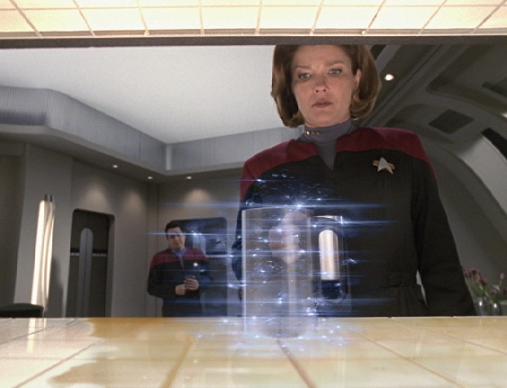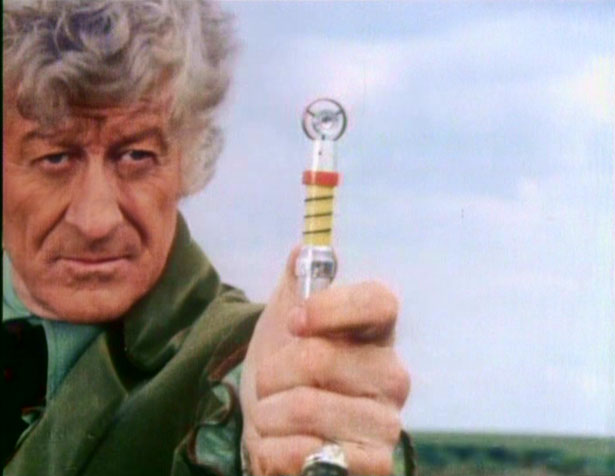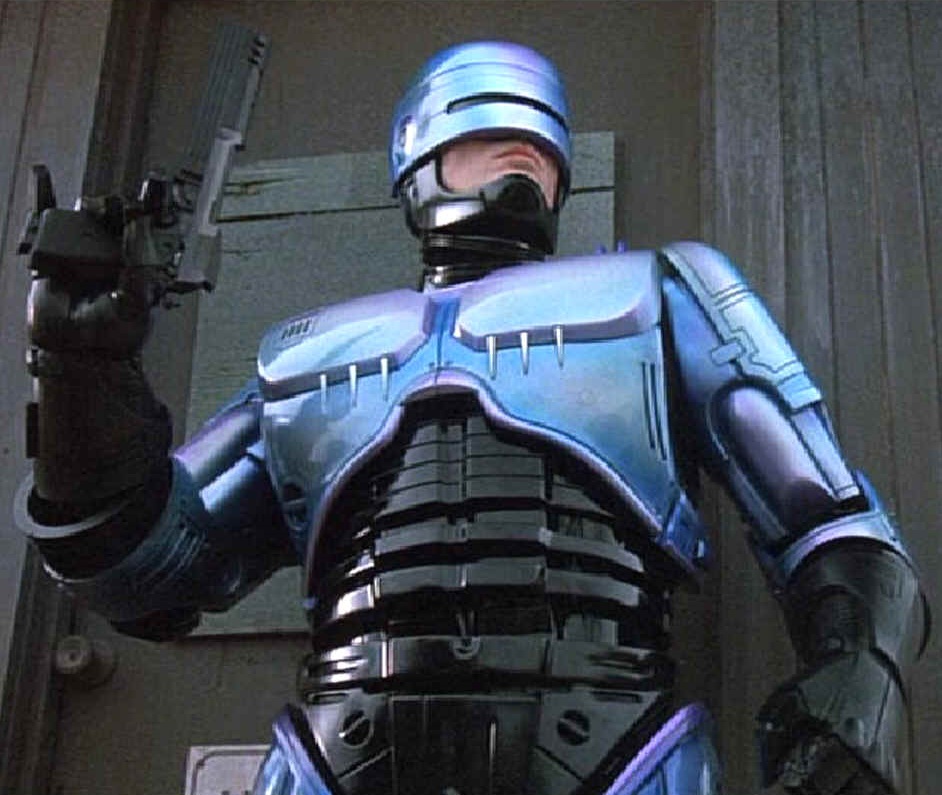In Pictures: Science Fiction Technology We Want For Real
Kevin compiled nineteen different technologies from his sci-fi-based dreams that he'd like to see made real. Could it be that he wishes he were The Hoff, Luke Skywalker, or your father? Perhaps. It's more likely that he has simply watched too many movies.
KITT
Short for Knight Industries Two Thousand, this fictional, sentient computer was installed in an old Pontiac Firebird equipped with various James Bond-like toys. The vehicle seemingly had everything anyone could ever need: a Molecular-Bonded Shell that repelled nearly any projectile, a set of rear-mounted undercarriage rocket boosters for incredible speeds (and a number of cheesy jumps), and an engine that went from 0 to 60 MPH in a mere two seconds. Ultimately what made this car cool was the computer AI, able to take control of the vehicle when needed, while throwing out a few jokes in the process.
The Neuralizer
First appearing in the original Men in Black movie, the Neuralizer was handy for making someone forget. The device was so powerful, it could flash the minds of a street full of people.
The Replicator
One of the coolest techs that appeared in the Next Generation era of Star Trek was the Replicator. Users could simply tell the machine what they wanted it, and it materialized from absolutely nothing. The theory behind the tech was that it rearranged universally-abundant subatomic particles to form molecules. The molecules were then arranged to form the desired object. Captain Picard was notorious for ordering "tea, Earl Grey, hot." However, the device was also used for creating air, machine parts, and clothing.
The TARDIS
Honestly, who doesn't want to travel in time? The Doctor seems to have too much fun with this device. Not only does the vehicle travel through time, it moves through space as well. The pilot can seemingly go anywhere at any point in time without the need for faster-than-light travel (FTL). The drawback to the TARDIS is that it's stuck in its 1950s-style police box shape. Thus, it stands out when appearing anywhere after the 50s. Apparently it's also obsolete, requires constant repairs, and has a quirky short-range guidance system. But don't let the disguise fool you. The TARDIS is bigger than it appears, providing an entire control room within its slim shape.
Cognitive AI
The idea of "thinking" machines isn't new. After all, cognitive robots and intelligent starship computers have littered the sci-fi genre for decades. You know the popular ones rather well: HAL-9000, C-3PO, Lieutenant Commander Data, and the Terminator. These are all machines capable of making judgment calls, speaking without pre-determined scripts, and even existing as if they're sentient beings sharing the earth with humans. Given mankind's fear that one day machines will think for themselves and take over the earth, scientists still reach for that level of artificial intelligence. Why? To move beyond human limitations. Wouldn't it be ideal to send intelligent, self-aware machines to explore Mars or perhaps one of Jupiter's moons? Forget the whole robot aspect--what if we had intelligent machines keeping track of our finances and paying bills electronically on their own? It'll all happen--just you wait and see.
The Holodeck
The Holodeck, which appeared in the Next Generation era of Star Trek, was basically the Replicator technology on a larger scale. Rather than create food and simple objects, the Holodeck turned one room into virtually anything--from a setting in the 1930s to a ship out on the open sea. But unlike the Replicator, the Holodeck incorporated various technologies, including tractor beams, shaped force fields, and fragranced fluid atomizers (for smell) to create a virtual environment. The Holodeck served as a recreational break from the sterile halls of a starship or space station. Safety protocols were set in place to prevent harm to humans. However, they could be disabled if needed.
The Lightsaber
Its use as a weapon aside, the Jedi Knight's Lightsaber would be an awesome tool around the house. Flick on the device and you instantly have a chain-less chainsaw. Need to break into the wall and fix a few pipes? Cut a small access hole. A smaller version could be used to quickly saw wood, cut down annoying shrubbery and vines, or fascinate the cat. On the medical side, a Lightsaber would be ideal for sealing up wounds (Ed.: Uh, did we watch the same version of Star Wars?).
Get Tom's Hardware's best news and in-depth reviews, straight to your inbox.
The Sonic Screwdriver
Like the TARDIS, the Sonic Screwdriver is a product of Gallifreyan technology, and can apparently perform many tasks. In addition to its use as a screwdriver (without actually touching screws), the alien device can open an electronic door, unlock handcuffs, disarm fusion bombs, repel ghosts, hack into computer records, scan Stonehenge, give orders to androids, light flaming torches, seal doors, upload software...the list goes on and on. Honestly, it seems that the writers of Doctor Who use the device when they need something solved on the fly.
The Stargate
Who needs a spaceship when you can walk through an artificial wormhole? The Stargate made it easy for the sci-fi genre to explore the stars by establishing a network of mechanical portals. Users simply "dialed" an address and the Stargate connected with another Stargate on the receiving end. The outer ring contains nine "chevrons," each one requiring a certain amount of power. The sliding inner ring has 39 (or 36, depending on the show) unique symbols representing star constellations and one symbol representing the point of origin. The ring rotates and plots the course somewhere within this galaxy by dialing six symbols and then the final point of origin symbol, thereby activating seven chevrons. Eight chevrons will take the traveler to another galaxy, and the ninth chevron apparently leads to an ancient ship traveling on a road to nowhere.
The Hoverboard
One of the bigger disappointments when we transitioned from the '90s to the 2000s was a distinct lack of hover boards. Then again, it's not quite 2015, so perhaps we still have a chance. This nifty device from 1989's Back to the Future II was shaped like a skateboard, but didn't have any wheels. Instead, it used technology that allowed it to travel across pavement, grass, and even water without ever touching the ground. Franchise creator Robert Zemeckis said that the hover boards were indeed real, and that they had been around for years. He claimed that the boards never went to market because parent groups prevented manufacturers from going retail.
RoboCop
There's no question that police officer Alexander James Murphy's career came to a brutal end when he was literally mutilated by a shotgun. Pronounced dead after the horrendous incident, Omni Consumer Products retrieved his body and created the first RoboCop. Although it seems rather morbid to allow corpses powered by cybernetics to walk the streets, robot police officers wouldn't be a bad idea. Assuming that they remain impervious to the corruption, robotic policemen would seemingly stick "by the book," know every aspect of the law without question, and be less likely to abuse its privileges.

Kevin Parrish has over a decade of experience as a writer, editor, and product tester. His work focused on computer hardware, networking equipment, smartphones, tablets, gaming consoles, and other internet-connected devices. His work has appeared in Tom's Hardware, Tom's Guide, Maximum PC, Digital Trends, Android Authority, How-To Geek, Lifewire, and others.
-
dragonsqrrl I think it's funny just how many of the "science fiction technologies" on your list come from Star Trek. If you want kick ass futuristic gadget pron, Star Trek is definitely the place to go. Transporters, shields, Replicators, Holodecks, photon torpedoes, WARP DRIVE?!... damn I'm having an epic flash back through the 90's.Reply -
rohitbaran Fix the article Toms. Clicking on one picture actually takes to the next picture and its description.Reply -
agnickolov Also, the last picture is missing - it ends with 19 of 20. Or perhaps the count is wrong?Reply -
haplo602 agnickolovAlso, the last picture is missing - it ends with 19 of 20. Or perhaps the count is wrong?Reply
yes, 7 of 9 MIA :-) -
Bah, I just want a self-drying jacket and self-tying sneakers ala Back to the Future 2. And flux capacitor > tardis. :pReply
-
Olle P RoboCop as such is a nifty idea, but I think it really needs to be combined with the cognitive AI to function properly.Reply
There's a myriad of situations where breaking a law might be better than not breaking one, and the police officer must be empathic with such situations and handle them well. (Think of the Judge Dredd movie, where a poor guy flee from some thugs by hiding inside a robot, only to be arrested by Dredd for that offence.)
Also, in the RoboCop movie there's a scene where RoboCop stop a robber in a grocery store, and RoboCop completely demolish most of the store's interior instead of making a clean arrest. That's not how I want a cop to behave! -
joytech22 I'm surprised they didn't mention space ships or something, I like halo's for showing how most architectures would design ships, they understand they don't need to be aerodynamic in space but they need room and power.Reply
Just like buildings.










